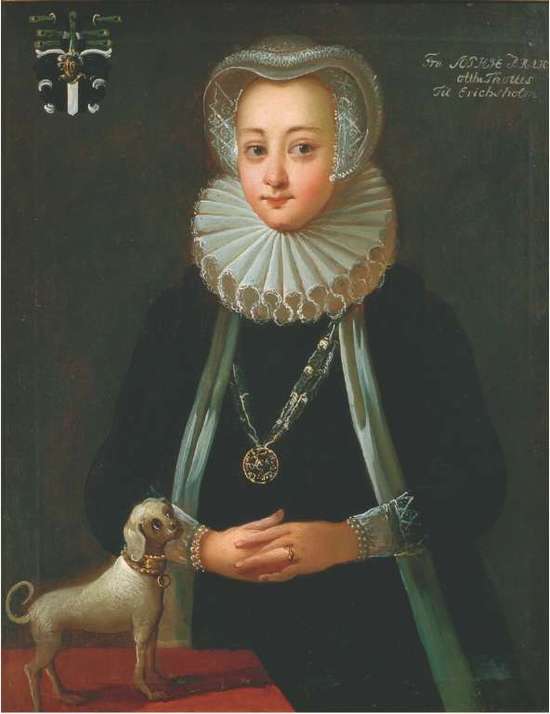Review
Sophia Brahe was born in the bosom of a noble family. She was self-taught with the help of her brother Tycho Brahe, a renowned astronomer. At a time when celestial body observation was done just by watching, they worked long hours together in the observatory of her brother. They made numerous calculations on eclipses and comet trajectories, and were the first ones to learn the exact position of planets in the 16th century. They also compiled a catalogue of the planetary positions that then became the most accurate collection of uniform data about the situation of planets with reference to stars. Her observations helped Johannes Kepler determine the elliptical orbits of planets.
Justifications
- She collaborated with her brother, Tycho Brahe, in the creation of a broad catalogue detailing the position of planets and stars.
- Johannes Kepler used her calculations to formulate his astronomy laws.
- She calculated eclipses and comet trajectories alongside her brother Tycho.
- She studied plants and alchemy, and made medications which became very popular in the high-society of the area.
- She studied the genealogy of Danish noble families.
Biography
In the 16th century, there were people who still believed that the Earth was flat and that there were still planets to be discovered. In the cold Danish lands, two members of the same family made a great contribution to astronomy. Siblings Tycho and Sophia Brahe worked together for years, studying the sky. Tycho Brahe, a famous and renowned astronomer, always praised the tenacity of her sister, who was self-taught and helped him in his research. They both faced their family, who did not accept that high-society members did anything else in their life other than idleness. Besides astronomy, Sophia Brahe also devoted her life to studying horticulture, physics and genealogy.
Sophia Brahe was born on August 24, 1556, in the city of Knutstorp, Denmark, in the bosom of a high nobility Danish family. Daughter of Otte Brahe, advisor to the King of Denmark and Beate Bille Brahe, she was the youngest of eight children.
Sophia soon showed interest on the sky and its stars, as well as on the Earth and its plants. Her older brother, Tycho, prided himself in her sister's eagerness to learn. She dived into knowledge learning everything by herself.
In 1573, when Sophia was only seventeen, she started helping Tycho in his astronomy observations (they both watched the lunar eclipse on December 8, 1573). She worked at her brother's observatory, called The Castle of Urania, Uraniborg, on the island of Hven, the best astronomy observatory before telescopes. There, she helped him calculate eclipses and comet trajectories. Both siblings wrote a large catalogue of planet movements and positions that would later be used by some of the most famous astronomers in history.
In 1577, she married Otto Thott, with whom she had her only child. In 1588, she became a widow and the owner of a large piece of land in Eriksholm. She then took up horticulture and had beautiful gardens built. Her plants, together with her learning chemistry and medicine, were used to make spagiric medicine, which became popular among the high society of the area. Meanwhile, she kept on helping her brother.
Soon after, Sophia met her second husband, Erik Lange. They married in 1602, despite their terrible financial situation. Her second marriage did not last long either, only ten years. A widow again, Sophia moved to Helsingor, where she lived until the end of her days pursuing a new hobby: genealogy. She spent her last years drawing up the genealogy of noble Danish families. She published it in 1626.
She passed away in 1643.
Extracted from Women with science (01/04/2022)
Extracted from Wikipedia (04/01/2022)
Works
- Catalogue on planet movements and positions (with her brother Tycho). 1573.
- Calculations on eclipses and comet trajectories (with her brother Tycho). 1573.
- Genealogy of noble Danish families. 1626.
Bibliography
Alic, Margaret (1991): El legado de Hipatia. Siglo veintiuno editores.
Figueiras, Lourdes (1998): Género y matemáticas. Editorial Síntesis.
Ferrer Valero, Sandra La hermana del astrónomo, Sophia Brahe (1556 – 1643) in Mujeres que hacen la historia- Breves biografías, 04/01/2022, <https://mujeresquehacenlahistoria.blogspot.com/2010/11/siglo-xvi-sofia-brahe.html>
Sophia Brahe- Wikipedia, la enciclopedia libre, 04/01/2022, <https://es.wikipedia.org/wiki/Sophia_Brahe>
Didactic approach
· Mathematics.
She can also be studied on the following subjects:
· Physics and chemistry (planet movements, elaboration of spagyric medicine).
· Biology (horticulture, using plants to make medicine).
· History (study of genealogy).
Documents
